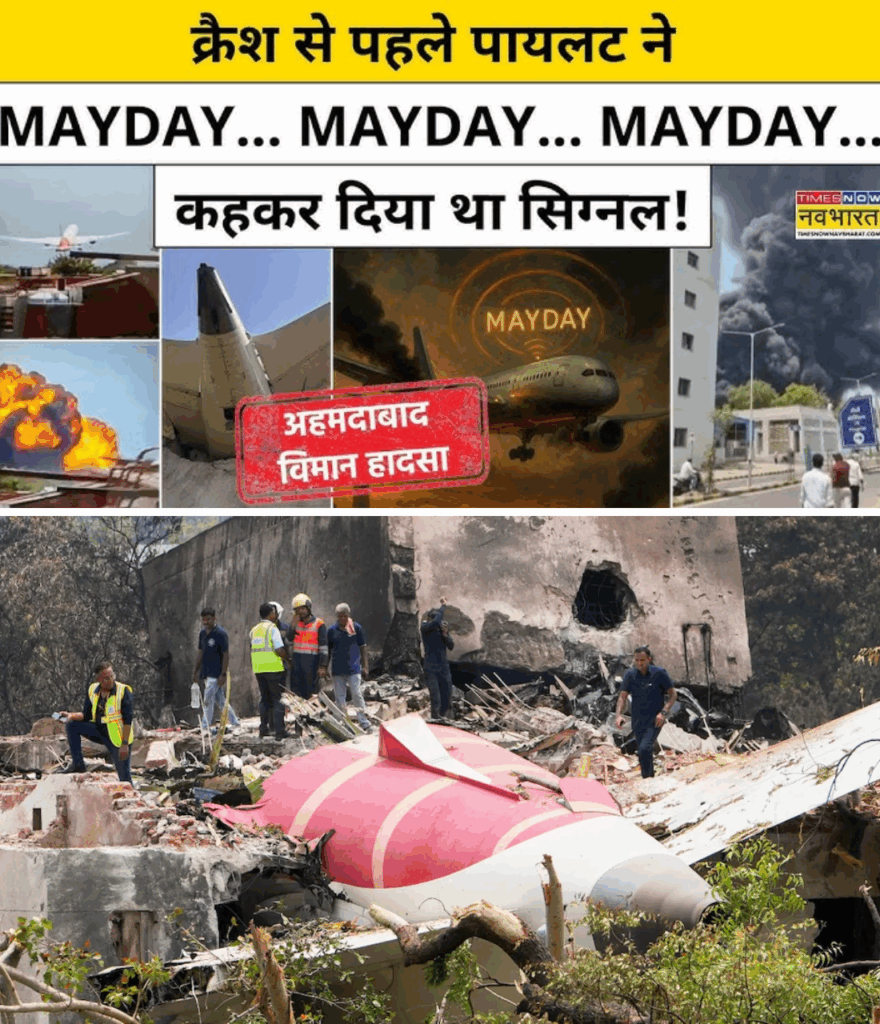After the Mayday call, it became clear that the aircraft had encountered a severe technical malfunction. The pilots were making every possible effort to regain control, but the situation was quickly slipping out of their hands. The video footage of the flight shows the plane descending gradually, its nose pointed upwards—a position typically used to generate lift during takeoff. This indicates that the pilots were trying until the last moment to gain thrust and altitude.
Many aviation experts speculate that the plane’s landing gear did not retract as it should, a process that normally begins about 50 feet after takeoff. Whether this was due to a technical fault or possible human error will only be known after the black box data is decoded.
As the aircraft lost altitude rapidly and the pilots realized there was nothing more they could do, Captain Sumit Sabharwal and First Officer Clive Kundar had only seconds to act. The plane crashed just two kilometers from the airport, having failed to achieve sufficient height for a recovery.

In such critical moments, the pilots’ focus shifts to minimizing destruction and attempting a hard landing in the safest possible direction. Survivors reported hearing a strange sound after the plane gained a little altitude, followed by an eerie silence as the aircraft began its fatal descent.
The “Brace” Call: Last Protocol Before Impact
A crucial part of airline safety protocol in emergencies is the “brace” call. When pilots realize that a crash or hard landing is imminent, they issue a “brace, brace, brace” command to the cabin crew. The crew then instructs passengers to assume the brace position—leaning forward and holding onto the seat in front—to minimize injury, particularly to the spine, during impact.
Experts explain that the brace position is designed to cushion the body against the force of a crash landing. While it cannot guarantee survival, it can reduce the risk of severe injuries, such as broken backbones. The command is given when both pilots are aware that the situation is beyond recovery and that all on board are in grave danger.
Whether the brace call was made during the Air India 171 crash is a matter for investigation and will be revealed through analysis of the cockpit voice recorder (CVR). Aviation professionals emphasize that the cabin crew is highly trained to follow such protocols and act as the “eyes and ears” of the pilots in the cabin.
Standard Operating Procedures in Crisis
Pilots are trained to follow three priorities in emergencies: fly, navigate, and communicate. Only after attempting to control the aircraft and navigate to safety do they communicate with air traffic control and the cabin. The cabin crew, upon receiving the captain’s signal, follows their own set of standard operating procedures (SOPs) to prepare passengers for impact.
According to DGCA regulations, it is mandatory for the captain to inform the cabin crew and passengers via the public address system if a crash landing is imminent. Whether these protocols were followed in the Ahmedabad crash will be determined by the ongoing investigation.
The tragedy serves as a somber reminder of the critical importance of emergency procedures and the professionalism of airline crews in the face of disaster.
News
Shocking Triple M*rder Over Property Dispute Shatters Rural Family in Uttar Pradesh
Shocking Triple Murder Over Property Dispute Shatters Rural Family in Uttar Pradesh Tragedy struck a quiet village in Uttar Pradesh…
Heavy Rains in North and Central India Trigger Flood Threats in Prayagraj as Ganga and Yamuna Rivers Rise
Heavy Rains in North and Central India Trigger Flood Threats in Prayagraj as Ganga and Yamuna Rivers Rise Incessant…
Family Demands Justice Following Alleged R@pe and M*rder of Young Female Police Constable
Barabanki, UP: Family Demands Justice Following Alleged R@pe and M*rder of Young Female Police Constable Tragedy has struck a family…
Tej Pratap Yadav Confirms 2024 Candidacy from Mahua, Addresses Party Disputes and Vision for Youth
Tej Pratap Yadav Confirms 2024 Candidacy from Mahua, Addresses Party Disputes and Vision for Youth Senior RJD leader and former…
Sad News for Katrina Kaif’s Family as Katrina &Vicky Kaushal’s Father Sham Kaushal wants to Su*cide!
Katrina Kaif’s Father-in-Law, Sham Kaushal, Opens Up About His Cancer Battle and Brush with Despair Sham Kaushal, father of Bollywood…
Kajol’s Daughter Nysa Devgn got Drunk as she Graduate from Switzerland, Kajol got emotional!
Nysa Devgan Graduates in Business Administration from Switzerland; Kajol and Ajay Devgn Celebrate Proud Moment Nysa Devgan, the daughter of…
End of content
No more pages to load










